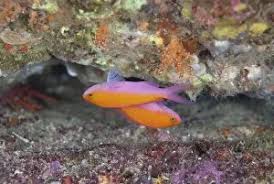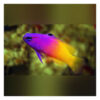Dragons and Their Relationship with Mythical Creatures in Chinese Legend

In Chinese mythology, dragons are among the most powerful and revered creatures, symbolizing imperial authority, strength, and the natural forces that govern the universe. However, dragons do not stand alone in the mythological realm of China. They are often associated with other mythical creatures that represent various aspects of life, nature, and the cosmos. These mythical beings together form a complex tapestry of legends and symbolism, each with its own unique attributes and relationships. This article explores the dragon’s role in Chinese mythology and its connection to other legendary creatures, shedding light on their symbolic relationships and their cultural significance.
The Chinese Dragon: A Mythical Powerhouse
In Chinese culture, the dragon is a symbol of power, longevity, and good fortune. Unlike the fearsome, destructive dragons in Western folklore, the Chinese dragon (long, 龙) is generally seen as a benevolent force, often associated with water, rain, rivers, and seas. It embodies the harmony of the natural world and the balance between human beings and the cosmos. The dragon is traditionally depicted as a long, serpentine creature with antler-like horns, a lion-like mane, and sharp claws.
The dragon is also a symbol of imperial authority. In ancient China, it was believed that the emperor was the “Son of Heaven,” and the dragon was his celestial totem. The emperor’s robes, thrones, and insignia often featured the image of the dragon, signaling his divine right to rule. The dragon was also associated with the cyclical forces of nature, influencing the weather, fertility, and prosperity. In this sense, the dragon is not just a mythological creature but a cosmic symbol, intimately connected to the life force of the universe.
The Phoenix: A Complementary Force
One of the most important mythical creatures in Chinese tradition is the phoenix (fenghuang, 凤凰). Often seen as the counterpart to the dragon, the phoenix embodies the yin to the dragon’s yang, balancing the masculine and feminine energies of the cosmos. While the dragon represents the emperor and masculinity, the phoenix symbolizes the empress and femininity. Together, they form a harmonious couple, reflecting the balance of opposing forces.
In Chinese art, the dragon and phoenix are often depicted together, symbolizing the union of the emperor and empress. Their pairing represents a harmonious reign and the fertility of the land, ensuring the prosperity and stability of the kingdom. In folklore, the phoenix is a bird of rebirth and renewal, often associated with peace and virtue. It is believed that the phoenix’s appearance heralds the arrival of a wise and benevolent ruler, further enhancing the dragon’s role as the protector of the empire.
The dragon and phoenix also appear in Chinese wedding ceremonies, where they symbolize the couple’s union and the promise of harmony in marriage. These two creatures are emblematic of the complementary nature of life itself—each needing the other to maintain balance and stability.
The Tiger: A Symbol of Strength and Protection
While the dragon is often associated with benevolence and the cosmos, the tiger (hu, 虎) represents strength, power, and protection. In Chinese mythology, the tiger is considered the king of the terrestrial animals, the counterpart to the dragon, which reigns over the celestial realm. The tiger embodies courage, discipline, and protection, often serving as a guardian figure in various myths.
In many legends, the tiger is depicted as a fierce protector of both humans and nature, ensuring that the balance between the two is maintained. In contrast to the dragon, which is associated with water and fluidity, the tiger is a creature of the earth, embodying solid strength and stability. The tiger’s role in Chinese mythology is often one of guarding the homeland, and it is frequently used as a symbol of military strength and courage.
The tiger’s relationship with the dragon is multifaceted. In some myths, the tiger is seen as a challenger to the dragon, representing earthly power in opposition to the celestial. In other stories, the tiger and dragon are depicted as complementary forces, both necessary for the maintenance of cosmic and earthly order. This duality underscores the balance of power between different realms, each with its own set of rules and authorities.
The Turtle: A Symbol of Longevity and Wisdom
Another important mythical creature in Chinese folklore is the turtle (gui, 龟), which is often associated with longevity, wisdom, and protection. The turtle is one of the Four Symbols, representing the northern direction, and is known for its role in the creation myth of Chinese cosmology. In many legends, the turtle is portrayed as carrying the world on its back, symbolizing stability and endurance.
The turtle’s connection to the dragon is primarily based on their shared association with water and the elements. Turtles are often seen as wise and slow-moving creatures that possess a deep understanding of the natural world. They are considered protectors of the earth, using their wisdom to maintain the balance of life. In this way, the turtle complements the dragon’s role as a cosmic force, acting as a stabilizing presence in the earthly realm.
The relationship between the turtle and the dragon is also symbolized in the myth of the Ao, a giant sea turtle that carries the world on its back. The dragon and the turtle are sometimes depicted as partners in maintaining the harmony of the universe, with the turtle providing wisdom and the dragon offering power.
The Lion: A Protector and Symbol of Courage
In Chinese mythology, the lion (shishi, 狮子) is not a native creature but a mythical representation of courage, protection, and strength. The lion is most famously represented in the form of the Fu lion or lion-dog, often found in pairs guarding the entrances to temples and palaces. These lion statues are considered protectors, warding off evil spirits and ensuring the safety of the spaces they guard.
The lion is also associated with the dragon in terms of protection and guardianship. While the dragon represents imperial authority, the lion serves as a terrestrial guardian, defending the physical world from harm. The lion’s relationship with the dragon is one of mutual protection, with the dragon symbolizing divine power and the lion embodying earthly strength.
In Chinese art, the lion and dragon often appear together, emphasizing the complementary nature of their roles. The lion is depicted as a fierce guardian, while the dragon is a symbol of celestial authority. Together, they represent the forces of protection that extend from the heavens to the earth.
The Dragon and Other Mythical Creatures in Chinese Cosmology
The Chinese cosmos is populated with numerous mythical creatures, each with a distinct role in maintaining the balance of the universe. The dragon’s relationship with other legendary creatures—such as the phoenix, tiger, turtle, lion, and others—reflects the broader theme of balance and harmony that runs through Chinese mythology.
In Chinese cosmology, there are Four Symbols (si xiang, 四象)—the dragon, phoenix, tiger, and turtle—which represent the four cardinal directions, the elements, and the balance between opposing forces. The dragon, associated with the eastern direction and the element of wood, is often seen as the catalyst for growth and change. The phoenix, representing the southern direction and fire, is a symbol of transformation and rebirth. The tiger, representing the western direction and metal, embodies strength and courage. The turtle, associated with the northern direction and water, symbolizes stability and endurance.
Together, these four creatures represent the balance of the natural world and the harmonious interplay of the elements. The dragon, in particular, is a central figure in this system, connecting the celestial and terrestrial realms and ensuring the proper flow of energy throughout the cosmos.
Conclusion
The dragon is one of the most powerful and revered creatures in Chinese mythology, and its relationships with other mythical creatures reveal much about the Chinese worldview. The interplay between the dragon and other legendary beings like the phoenix, tiger, turtle, and lion highlights the importance of balance, harmony, and mutual respect in maintaining the order of the universe. These creatures, while distinct in their symbolism and attributes, all work together to create a cohesive and dynamic system in Chinese mythology, where each being has a unique role to play in sustaining the cosmic and earthly realms. The dragon, as the central figure in this mythological network, continues to captivate the imagination and remains an enduring symbol of strength, wisdom, and protection in Chinese culture.


